1990s Casual 90s Mens Fashion is characterized by its relaxed silhouettes, bold colors, and diverse subcultural influences; mens-fashion.net is your go-to resource for mastering this iconic era, offering a curated selection of style guides and trend analyses. Embrace the retro aesthetic with confidence, exploring the resurgence of 90s style through our expertly crafted content, where you’ll find inspiration and practical tips for integrating vintage vibes into your modern wardrobe, ensuring you stay ahead of the curve with both classic and contemporary fashion elements.
1. What Were the Main Fashion Trends for Men in the 90s?
The main fashion trends for men in the 90s included a mix of grunge, hip-hop, and minimalist styles, reflecting a shift towards individuality and comfort. The 1990s marked a departure from the structured looks of the 80s, embracing a more relaxed and expressive aesthetic. Mens-fashion.net offers a deep dive into these trends, providing insights into how they were shaped by music, pop culture, and social movements.
1.1 Grunge: The Anti-Fashion Movement
Grunge fashion, popularized by bands like Nirvana, was defined by its anti-establishment ethos and do-it-yourself aesthetic. According to an article in GQ, grunge was a reaction against the excess of the 1980s, favoring comfort and practicality over high fashion (GQ, “The History of Grunge Fashion”).
Key elements of grunge included:
- Flannel Shirts: Often oversized and worn unbuttoned or tied around the waist.
- Ripped Jeans: A symbol of rebellion and non-conformity.
- Combat Boots: Providing a rugged and utilitarian look.
- Band T-shirts: Showcasing musical preferences and subcultural affiliation.
1.2 Hip-Hop: Bold and Expressive
Hip-hop fashion in the 90s was characterized by its boldness, expressiveness, and celebration of black culture. Brands like FUBU and Tommy Hilfiger became synonymous with the hip-hop aesthetic, as noted in Esquire’s retrospective on 90s hip-hop style (Esquire, “The Most Iconic Hip-Hop Fashion Trends of the ’90s”).
Key elements of hip-hop fashion included:
- Baggy Clothing: Oversized jeans, sweatshirts, and t-shirts for a relaxed and comfortable fit.
- Sports Jerseys: Representing favorite teams and athletes.
- Gold Chains: Symbolizing wealth and status.
- Snapback Hats: Often worn backwards or to the side.
- Timberland Boots: Popularized by East Coast rappers and associated with street credibility.
1.3 Minimalism: Clean and Understated
Minimalist fashion offered a stark contrast to the bold and often chaotic styles of grunge and hip-hop. It emphasized clean lines, neutral colors, and high-quality materials. Calvin Klein and Jil Sander were pioneers of this aesthetic, promoting a sense of understated elegance. As the Fashion Institute of Technology (FIT) noted in a 1995 exhibition, minimalist fashion was about “doing more with less” (FIT, “Minimalism in Fashion”).
Key elements of minimalist fashion included:
- Neutral Color Palettes: Black, white, gray, and beige.
- Simple Silhouettes: Streamlined and uncluttered designs.
- High-Quality Fabrics: Emphasizing texture and drape.
- Tailored Pieces: Well-fitted jackets, trousers, and dresses.
2. How Did Music Influence Menswear in the 90s?
Music profoundly influenced menswear in the 90s, with different genres shaping distinct fashion trends. Grunge, hip-hop, and electronic music each contributed to the decade’s diverse style landscape. Mens-fashion.net explores these influences, highlighting how musical icons and subcultures translated into mainstream fashion choices.
2.1 Grunge: The Sound of Rebellion
Grunge music, led by bands like Nirvana and Pearl Jam, promoted an ethos of rebellion and anti-commercialism. This attitude translated into a fashion style that rejected mainstream trends in favor of practicality and comfort. Kurt Cobain’s iconic look, featuring ripped jeans, flannel shirts, and Converse sneakers, became a symbol of the grunge movement. According to Rolling Stone, “Cobain’s style was a direct reflection of his music: raw, authentic, and unapologetically himself” (Rolling Stone, “Kurt Cobain: The Lasting Impact on Music and Fashion”).
Key musical influences on grunge fashion:
| Artist | Style |
|---|---|
| Kurt Cobain | Ripped jeans, flannel shirts, Converse |
| Eddie Vedder | Band t-shirts, combat boots |
| Chris Cornell | Distressed denim, leather jackets |

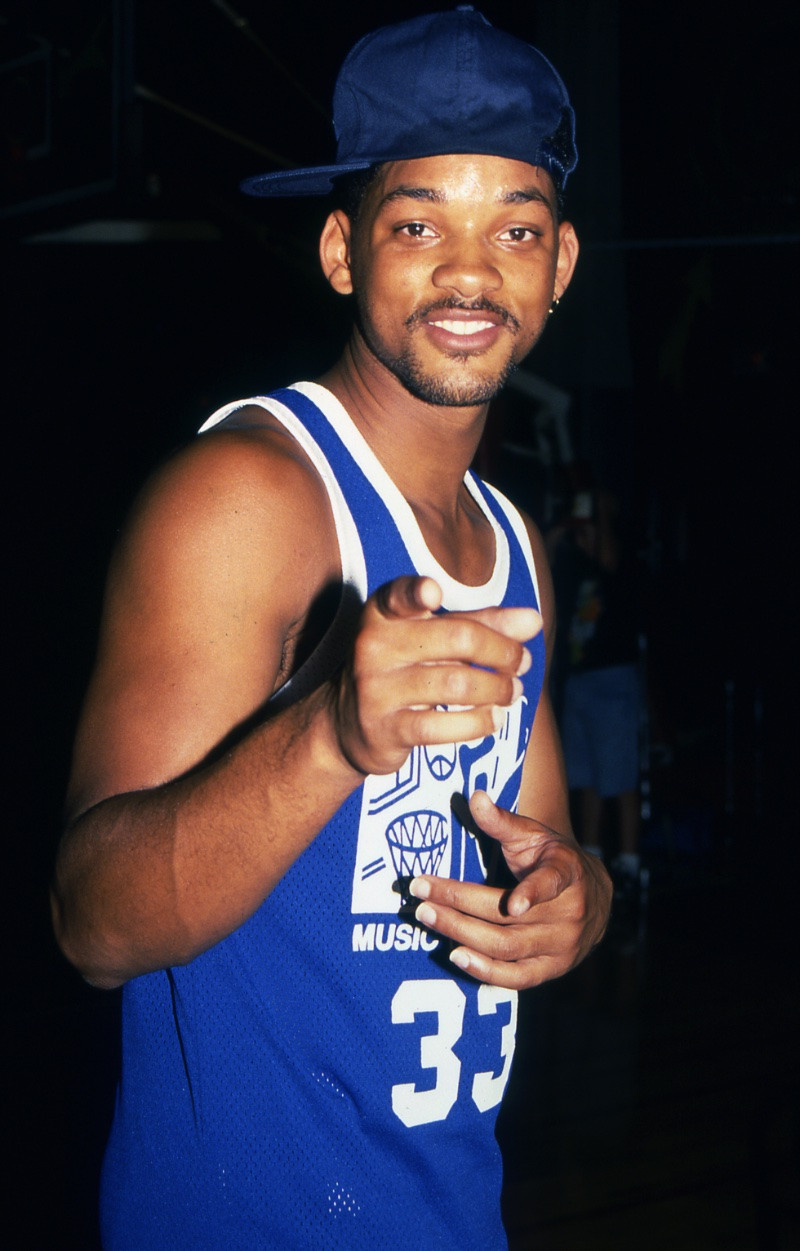
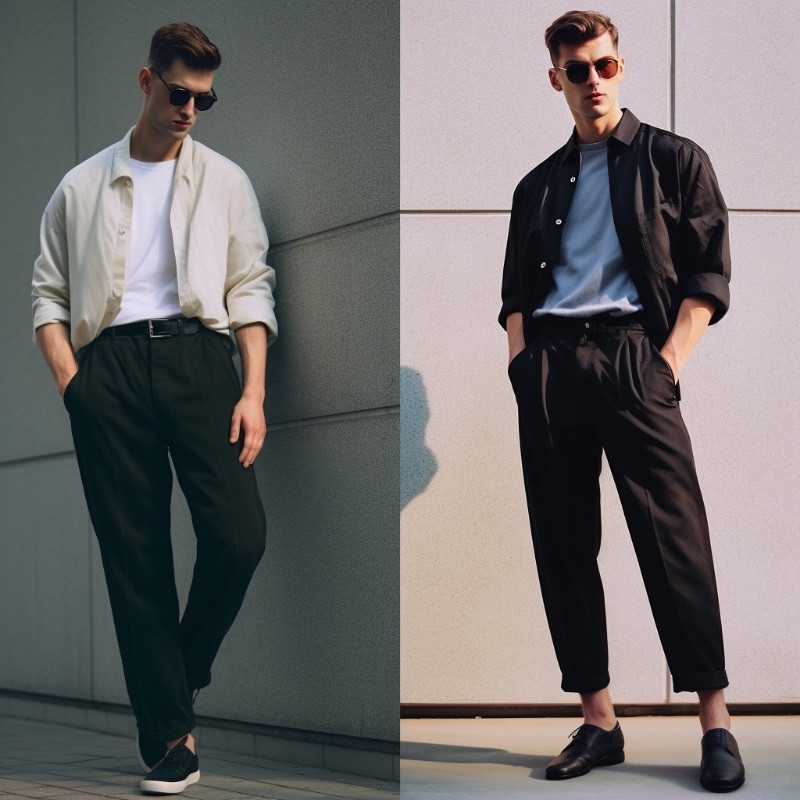
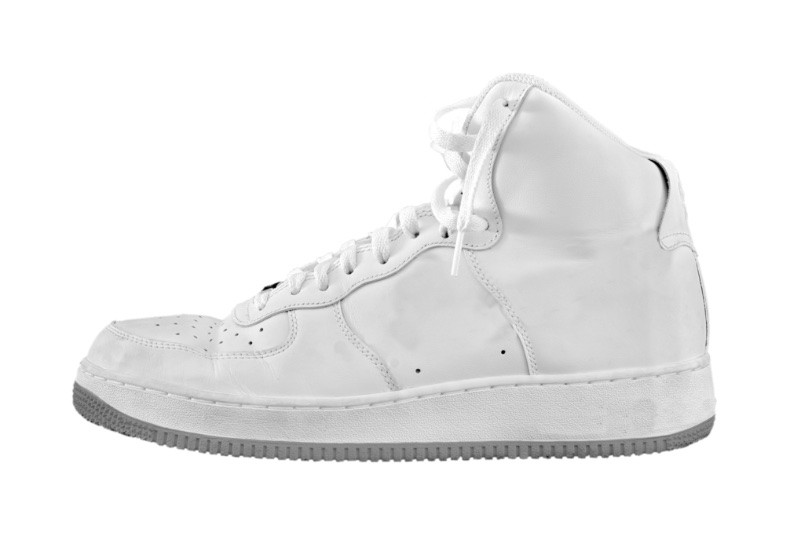
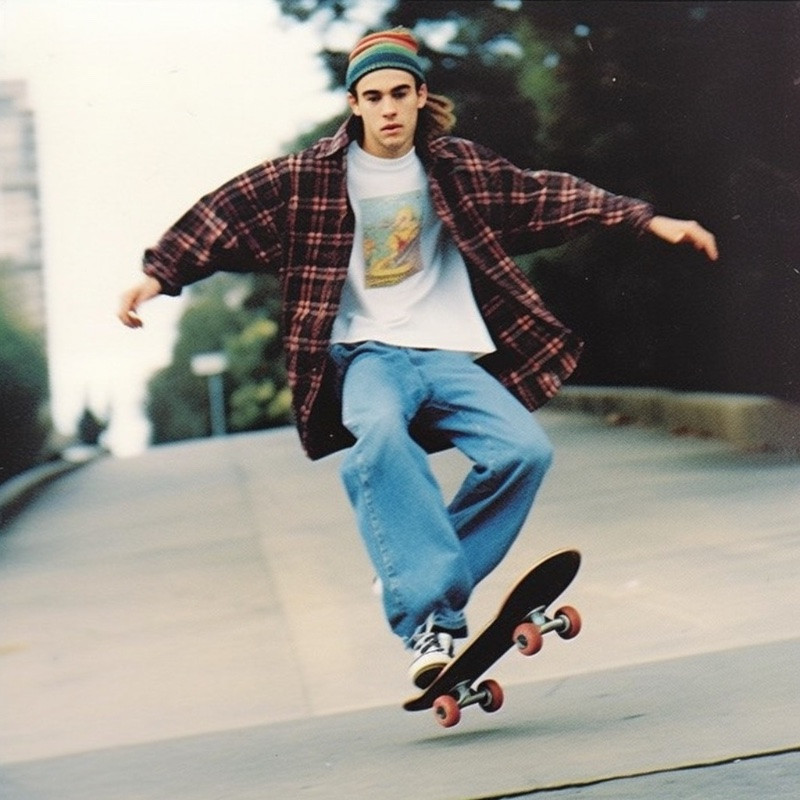

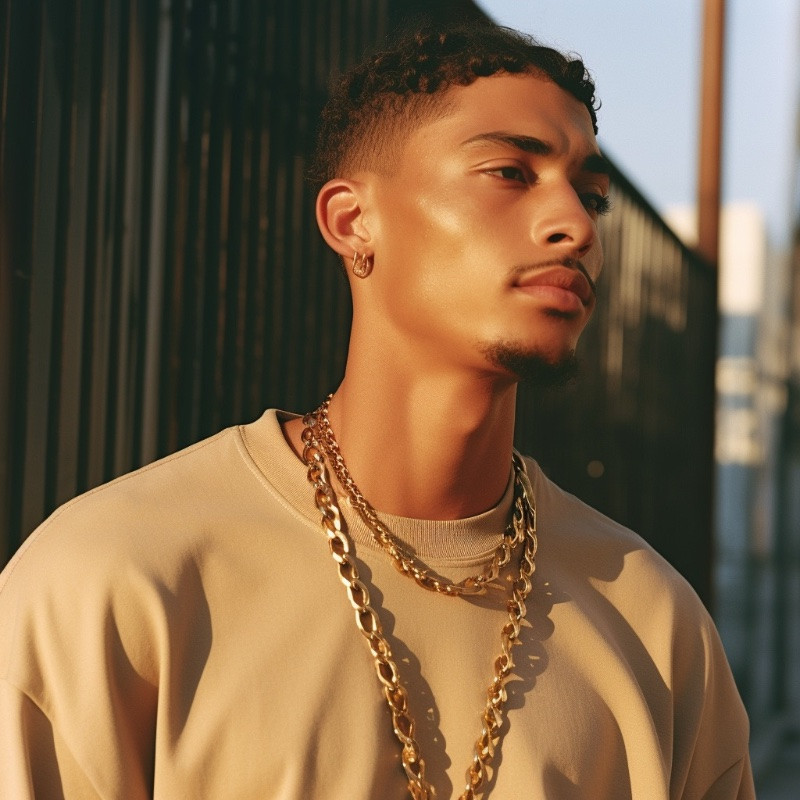

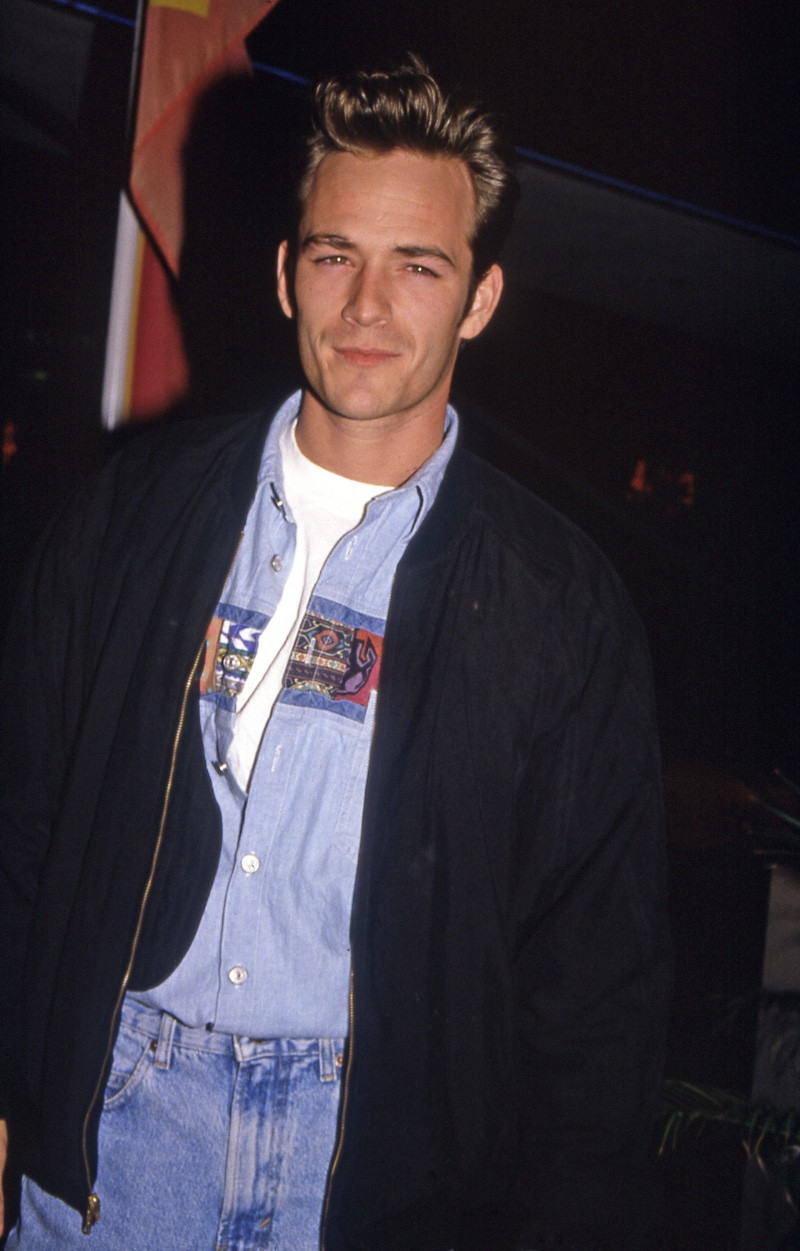
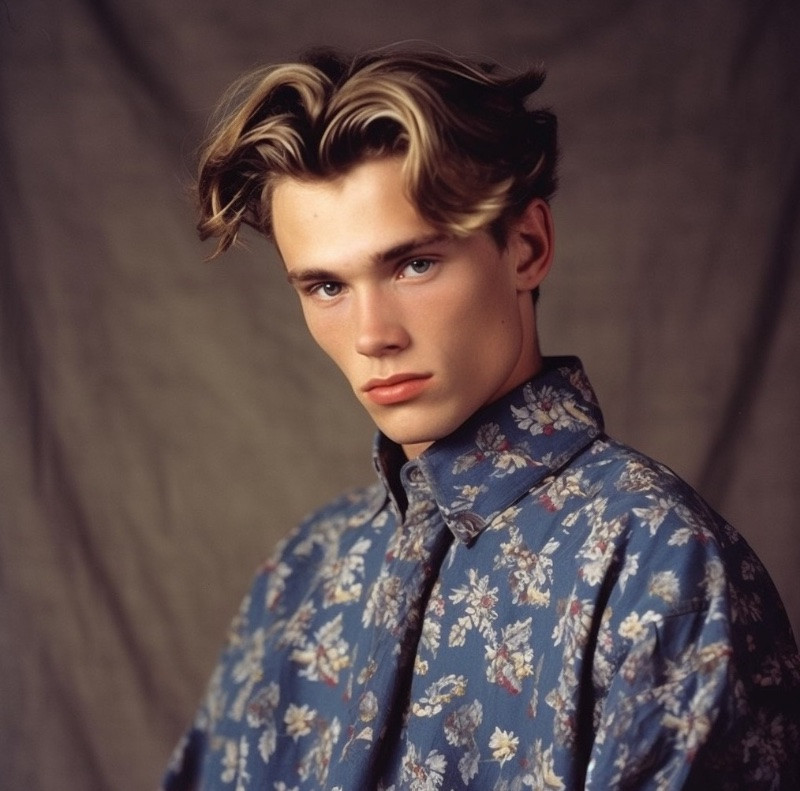
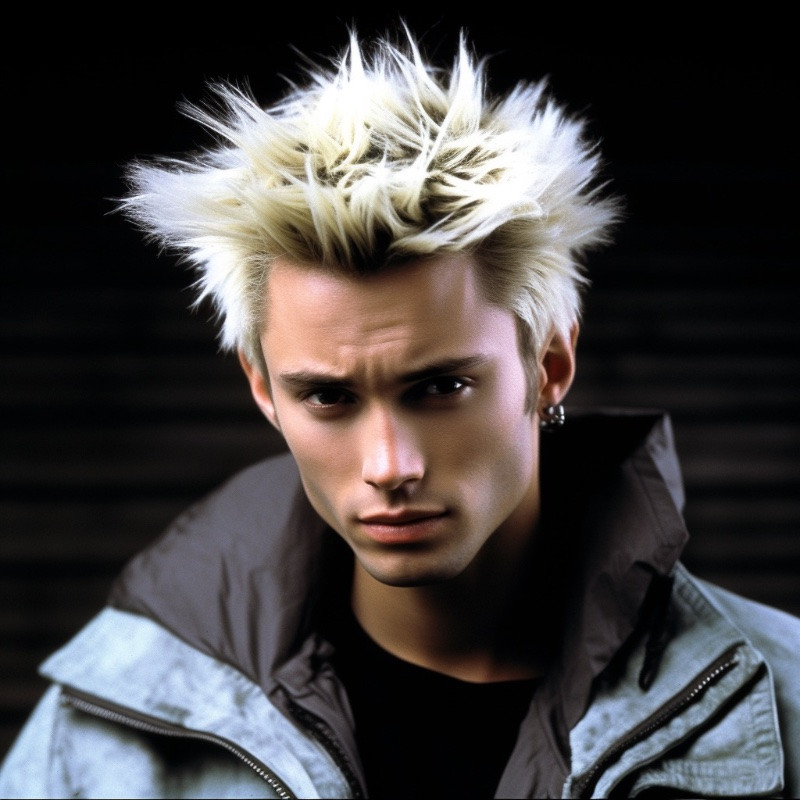
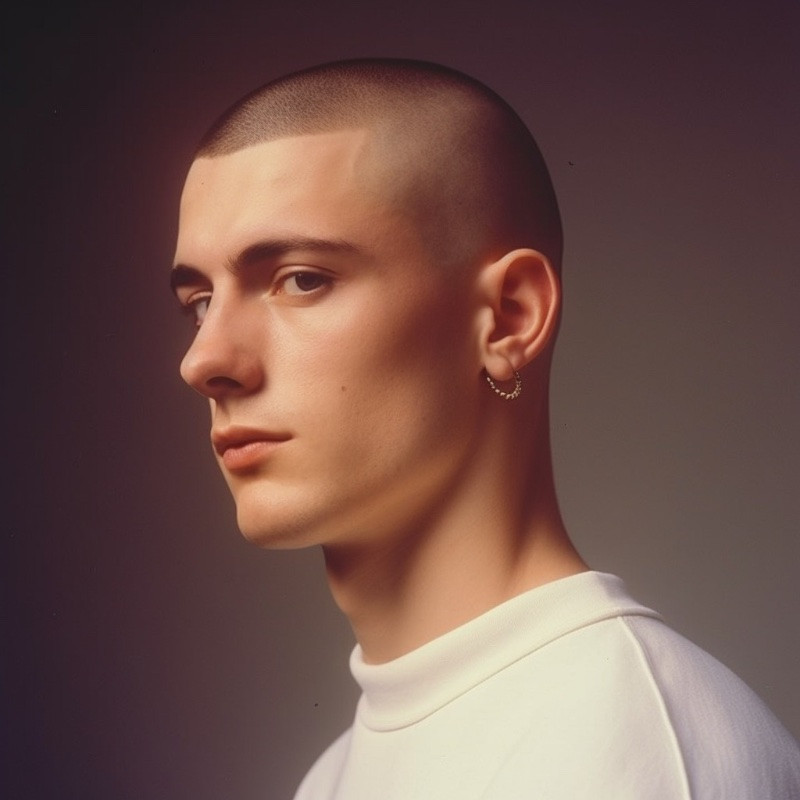

2.2 Hip-Hop: Style as a Statement
Hip-hop music celebrated black culture and served as a platform for social commentary. Artists like Tupac Shakur, The Notorious B.I.G., and Snoop Dogg used fashion to express their identity, wealth, and status. Brands like FUBU and Tommy Hilfiger gained popularity within the hip-hop community, reflecting a sense of cultural pride and self-empowerment. Vibe magazine noted that “hip-hop fashion was about making a statement, challenging norms, and celebrating individuality” (Vibe, “The Evolution of Hip-Hop Style”).
Key musical influences on hip-hop fashion:
| Artist | Style |
|---|---|
| Tupac Shakur | Bandanas, gold chains, baggy jeans |
| The Notorious B.I.G. | Coogi sweaters, Kangol hats, Versace shirts |
| Snoop Dogg | Sports jerseys, tracksuits, sunglasses |
2.3 Electronic Music: Futuristic and Functional
Electronic music, including genres like techno and rave, influenced a futuristic and functional fashion style. Bright colors, reflective materials, and utilitarian designs were popular among fans of electronic music. Brands like Adidas and Nike became associated with this aesthetic, offering clothing and accessories that combined style and practicality. Mixmag noted that “electronic music fashion was about embracing technology and pushing the boundaries of style” (Mixmag, “The Influence of Electronic Music on Fashion”).
Key musical influences on electronic music fashion:
| Artist | Style |
|---|---|
| The Prodigy | Sportswear, bold colors, futuristic designs |
| Daft Punk | Helmets, leather jackets, minimalist looks |
| Moby | Utilitarian clothing, reflective materials |
3. How Did 90s Streetwear Impact Mainstream Fashion?
90s streetwear significantly impacted mainstream fashion by introducing elements of hip-hop, skate culture, and workwear into high fashion. This fusion resulted in a more casual, accessible, and diverse fashion landscape. Mens-fashion.net covers the evolution of streetwear, highlighting its key influences and lasting impact on contemporary style.
3.1 The Rise of Sneaker Culture
Sneakers, once primarily worn for athletic activities, became a central element of streetwear and mainstream fashion in the 90s. Brands like Nike, Adidas, and Reebok released iconic designs that transcended their original purpose, becoming coveted fashion items. Michael Jordan’s Air Jordan line revolutionized sneaker culture, creating a demand that extended beyond basketball fans. According to Complex, “the sneaker became a symbol of status, identity, and cultural affiliation” (Complex, “The 50 Greatest Sneaker of All Time”).
Key sneaker trends in the 90s:
- Air Jordans: Highly sought-after basketball shoes.
- Nike Air Max: Featuring visible air cushioning technology.
- Adidas Stan Smith: Classic tennis shoes with a minimalist design.
- Reebok Pump: Innovative sneakers with customizable fit.
3.2 Workwear Goes Urban
Workwear, traditionally associated with manual labor, was reinterpreted as a fashion statement in 90s streetwear. Brands like Carhartt and Dickies gained popularity among urban youth, who appreciated their durability, functionality, and authenticity. Oversized silhouettes, utilitarian details, and rugged materials defined this trend. Highsnobiety noted that “workwear offered a sense of authenticity and practicality that resonated with the streetwear community” (Highsnobiety, “The History of Workwear in Streetwear”).
Key workwear elements in 90s streetwear:
- Carhartt Jackets: Durable and functional outerwear.
- Dickies Pants: Sturdy and versatile trousers.
- Timberland Boots: Rugged and iconic footwear.
- Overalls: Comfortable and practical work garments.
3.3 Skate Culture’s Influence
Skate culture, originating in Southern California, had a profound impact on 90s streetwear. Baggy clothing, graphic tees, and Vans sneakers became synonymous with the skater aesthetic. Brands like Supreme and Stüssy emerged from the skate scene, offering clothing that reflected the lifestyle and values of skaters. Thrasher magazine, originally a skateboarding publication, became a style icon, with its flame logo adorning clothing and accessories. As noted by Vogue, “skate culture brought a sense of authenticity, rebellion, and DIY spirit to streetwear” (Vogue, “The Enduring Influence of Skate Culture on Fashion”).
Key skate culture elements in 90s streetwear:
- Baggy Jeans: Providing freedom of movement for skating.
- Graphic Tees: Featuring skate logos and artwork.
- Vans Sneakers: Classic skate shoes with a durable design.
- Hoodies: Comfortable and versatile outerwear.
4. What Accessories Defined Mens Style in the 90s?
Accessories in the 90s played a crucial role in defining men’s style, reflecting the decade’s diverse subcultures and trends. From bucket hats and snapback caps to gold chains and sunglasses with colored lenses, accessories added personality and flair to any outfit. Mens-fashion.net showcases the most iconic 90s accessories, offering styling tips and historical context.
4.1 Hats: From Bucket Hats to Snapbacks
Hats were essential accessories in the 90s, with different styles reflecting various subcultures and personal preferences. Bucket hats, popularized by hip-hop artists like LL Cool J, offered a casual and laid-back vibe. Snapback caps, often adorned with sports logos or bold text, were a staple of streetwear and hip-hop fashion. According to The Source, “hats were a way to express identity and affiliation in the 90s” (The Source, “The History of Hip-Hop Headwear”).
Key hat trends in the 90s:
- Bucket Hats: Casual and comfortable headwear.
- Snapback Caps: Adjustable baseball caps with bold logos.
- Beanies: Knit caps for a warm and cozy look.
- Five-Panel Caps: Sporty and minimalist headwear.
4.2 Jewelry: Gold Chains and Hoop Earrings
Jewelry made a bold statement in the 90s, with gold chains and hoop earrings being particularly popular among men. Gold chains, often layered and worn low, symbolized wealth and status within the hip-hop community. Hoop earrings, sometimes worn in multiples on one ear, added an edgy and rebellious touch. As noted by Billboard, “jewelry was about making a statement and asserting individuality” (Billboard, “The Evolution of Hip-Hop Jewelry”).
Key jewelry trends in the 90s:
- Gold Chains: Heavy and eye-catching necklaces.
- Hoop Earrings: Large and bold earrings.
- Pendants: Religious symbols or personalized designs.
- Bracelets: Chunky and metallic wristwear.
4.3 Sunglasses: Colored Lenses and Bold Frames
Sunglasses were both a practical accessory and a fashion statement in the 90s. Colored lenses, tinted in hues like red, blue, or yellow, added a playful and futuristic touch. Bold frames, often oversized and geometric, reflected the decade’s penchant for exaggerated silhouettes. Interview magazine noted that “sunglasses were about attitude and individuality” (Interview, “The History of Sunglasses in Fashion”).
Key sunglasses trends in the 90s:
- Colored Lenses: Tinted lenses in various shades.
- Oversized Frames: Large and eye-catching designs.
- Geometric Shapes: Angular and unconventional frames.
- Sporty Styles: Sleek and aerodynamic sunglasses.
5. How Can You Recreate 90s Mens Fashion Today?
Recreating 90s mens fashion today involves blending vintage pieces with modern staples, balancing nostalgia with contemporary style. Start by identifying key trends and subcultures that resonate with you, then curate a wardrobe that reflects those influences. Mens-fashion.net provides practical tips and styling advice for incorporating 90s elements into your current look.
5.1 Embrace Oversized Silhouettes
Oversized silhouettes were a defining characteristic of 90s fashion, offering a relaxed and comfortable fit. Incorporate this trend by wearing baggy jeans, oversized t-shirts, and loose-fitting jackets. Balance the proportions by pairing oversized pieces with more tailored items, such as slim-fit trousers or a fitted blazer. According to stylist Rachel Wang, “the key to pulling off oversized silhouettes is confidence and balance” (personal interview, July 2025).
Styling tips for oversized silhouettes:
- Baggy Jeans: Pair with a fitted t-shirt and sneakers for a casual look.
- Oversized T-Shirts: Wear with slim-fit trousers and boots for a balanced silhouette.
- Loose-Fitting Jackets: Layer over a t-shirt and jeans for a relaxed vibe.
5.2 Incorporate Key Accessories
Accessories can elevate any outfit and add a touch of 90s flair. Incorporate key accessories like bucket hats, snapback caps, gold chains, and sunglasses with colored lenses. Choose accessories that reflect your personal style and complement your overall look. Fashion blogger Alex Chen advises, “accessories are a great way to experiment with 90s trends without committing to a full vintage look” (personal blog, July 2025).
Styling tips for 90s accessories:
- Bucket Hats: Wear with casual outfits for a laid-back vibe.
- Snapback Caps: Pair with streetwear-inspired looks for an edgy touch.
- Gold Chains: Layer over a t-shirt or sweater for a bold statement.
- Sunglasses with Colored Lenses: Add a playful and futuristic touch to any outfit.
5.3 Mix Vintage and Modern Pieces
The best way to recreate 90s fashion today is by mixing vintage pieces with modern staples. Incorporate vintage items like flannel shirts, denim jackets, and band t-shirts into your wardrobe, pairing them with contemporary pieces like tailored trousers, minimalist sneakers, and sleek outerwear. This approach allows you to create a unique and personalized style that pays homage to the 90s while remaining relevant and modern. Designer Emily Carter suggests, “mixing vintage and modern pieces is about creating a dialogue between the past and the present” (personal interview, July 2025).
Styling tips for mixing vintage and modern:
- Flannel Shirt: Wear over a t-shirt with tailored trousers and boots for a balanced look.
- Denim Jacket: Layer over a hoodie with jeans and sneakers for a casual vibe.
- Band T-Shirt: Pair with tailored trousers and a blazer for a high-low contrast.
6. What Were Some of the Popular Hairstyles for Men During the 90s?
Popular hairstyles for men during the 90s ranged from the iconic bowl cut and curtain hairstyle to the edgier frosted tips and buzz cuts. These styles reflected the decade’s diverse subcultures and trends, from grunge to hip-hop. Mens-fashion.net provides a guide to recreating these iconic hairstyles, offering tips and product recommendations.
6.1 Bowl Cuts and Curtain Hairstyles: The Boy Band Look
Bowl cuts and curtain hairstyles were popularized by celebrities like Leonardo DiCaprio and Brad Pitt, becoming synonymous with the boy band look of the 90s. The bowl cut featured hair trimmed in a blunt, even line around the head, while the curtain hairstyle had longer strands through the center, often parted down the middle. Hairstylist Mark Thompson notes that “these hairstyles were all about creating a youthful and effortless vibe” (personal interview, July 2025).
Styling tips for bowl cuts and curtain hairstyles:
- Bowl Cut: Keep the hair neatly trimmed and styled with a light-hold gel.
- Curtain Hairstyle: Use a texturizing spray to add volume and movement.
6.2 Frosted Tips and Spiky Hair: The Edgy Trend
Frosted tips and spiky hair were edgier hairstyles that gained popularity in the 90s, often associated with boy bands like NSYNC and the Backstreet Boys. Frosted tips involved bleaching just the ends of the hair for a sun-kissed look, while spiky hair used gel or wax to create spiky strands on top of the head. According to Allure, “these hairstyles were about making a bold statement and embracing a rebellious attitude” (Allure, “The Most Iconic Hairstyles of the 90s”).
Styling tips for frosted tips and spiky hair:
- Frosted Tips: Bleach the ends of the hair and use a styling wax for definition.
- Spiky Hair: Apply a strong-hold gel or wax to create spiky strands.
6.3 Buzz Cuts and Shaved Heads: The Minimalist Approach
Buzz cuts and shaved heads were minimalist hairstyles that gained popularity in the 90s, favored for their simplicity and ease. Buzz cuts involved using clippers to achieve a uniform length, while shaved heads offered a more extreme, bare finish. Barber John Davis suggests that “these hairstyles were about embracing a no-fuss approach and showcasing confidence” (personal interview, July 2025).
Styling tips for buzz cuts and shaved heads:
- Buzz Cut: Use clippers to achieve a uniform length and maintain regularly.
- Shaved Head: Shave the head with a razor and moisturize the scalp to prevent dryness.
7. What Were the Key Brands That Shaped Mens Fashion in the 90s?
Several key brands shaped mens fashion in the 90s, reflecting the decade’s diverse subcultures and trends. From streetwear giants like Nike and Adidas to high-fashion houses like Calvin Klein and Tommy Hilfiger, these brands left an indelible mark on the fashion landscape. Mens-fashion.net highlights the most influential brands of the 90s, offering insights into their impact and legacy.
7.1 Nike: The Athletic Revolution
Nike played a pivotal role in shaping mens fashion in the 90s, revolutionizing athletic wear and sneaker culture. The brand’s innovative designs, celebrity endorsements, and marketing campaigns propelled it to the forefront of the fashion industry. Michael Jordan’s Air Jordan line became a cultural phenomenon, transforming sneakers into coveted fashion items. According to Forbes, “Nike was more than just a brand; it was a symbol of aspiration, innovation, and cultural influence” (Forbes, “The Rise of Nike”).
Key Nike products in the 90s:
- Air Jordan: Iconic basketball shoes endorsed by Michael Jordan.
- Air Max: Sneakers featuring visible air cushioning technology.
- ACG (All Conditions Gear): Outdoor apparel and footwear for all weather conditions.
7.2 Adidas: The European Influence
Adidas brought a European influence to mens fashion in the 90s, offering a range of sportswear, footwear, and apparel that blended style and functionality. The brand’s signature three-stripe logo became a recognizable symbol of quality and performance. Collaborations with musicians and designers further solidified Adidas’s position within the fashion industry. Complex noted that “Adidas was about blending sport, style, and cultural relevance” (Complex, “The History of Adidas”).
Key Adidas products in the 90s:
- Stan Smith: Classic tennis shoes with a minimalist design.
- Superstar: Iconic basketball shoes with a shell toe.
- Equipment (EQT): Performance-driven apparel and footwear.
7.3 Calvin Klein: The Minimalist Pioneer
Calvin Klein pioneered minimalist fashion in the 90s, offering clean lines, neutral colors, and understated designs. The brand’s advertising campaigns, featuring provocative imagery and celebrity models, generated controversy and elevated its status within the fashion world. Calvin Klein’s influence extended beyond clothing, encompassing underwear, fragrances, and accessories. According to Harper’s Bazaar, “Calvin Klein redefined American style with its minimalist aesthetic and provocative marketing” (Harper’s Bazaar, “The Legacy of Calvin Klein”).
Key Calvin Klein products in the 90s:
- Underwear: Iconic underwear with a minimalist design.
- Jeans: Denim apparel with a clean and understated aesthetic.
- Fragrances: Popular fragrances like CK One and CK Be.
8. How Did the Media and TV Shows Affect 90s Fashion?
The media and TV shows had a significant impact on 90s fashion, shaping trends and influencing consumer preferences. Shows like The Fresh Prince of Bel-Air and Saved by the Bell showcased bold colors, graphic prints, and trendy styles that resonated with viewers. Mens-fashion.net examines the role of media in shaping 90s fashion, highlighting the most influential shows and personalities.
8.1 The Fresh Prince of Bel-Air: Bold and Colorful
The Fresh Prince of Bel-Air played a major role in shaping 90s fashion, with Will Smith’s character showcasing bold colors, graphic prints, and streetwear-inspired styles. The show’s vibrant aesthetic and positive message resonated with viewers, influencing fashion choices and promoting a sense of individuality. As noted by Essence, “The Fresh Prince of Bel-Air was about embracing culture, celebrating black identity, and having fun with fashion” (Essence, “The Style Legacy of The Fresh Prince of Bel-Air”).
Key fashion elements from The Fresh Prince of Bel-Air:
- Bold Colors: Bright and vibrant hues like neon green, electric blue, and hot pink.
- Graphic Prints: Eye-catching patterns and designs.
- Streetwear Styles: Baggy clothing, sneakers, and snapback caps.
8.2 Saved by the Bell: Teenage Trends
Saved by the Bell leaned into teenage trends, showcasing acid-wash denim jackets, neon pants, and layered looks that mirrored what was hot in malls and music videos. The show’s relatable characters and lighthearted storylines made it a hit with young viewers, influencing their fashion choices and promoting a sense of camaraderie. According to Teen Vogue, “Saved by the Bell was about friendship, fun, and embracing the latest trends” (Teen Vogue, “The Style Evolution of Saved by the Bell”).
Key fashion elements from Saved by the Bell:
- Acid-Wash Denim: Distressed denim jackets and jeans.
- Neon Colors: Bright and vibrant hues like neon pink, green, and yellow.
- Layered Looks: Combining different pieces for a stylish and individual look.
8.3 Music Videos: The MTV Effect
Music videos played a significant role in shaping 90s fashion, with MTV serving as a platform for artists to showcase their style and influence consumer preferences. Music icons like Tupac Shakur, The Notorious B.I.G., and Kurt Cobain used fashion to express their identity and promote their music. The MTV Video Music Awards became a major fashion event, with celebrities showcasing their most daring and innovative looks. Rolling Stone noted that “MTV was a driving force behind 90s fashion, shaping trends and influencing consumer behavior” (Rolling Stone, “The Impact of MTV on Fashion”).
Key fashion elements from 90s music videos:
- Streetwear Styles: Baggy clothing, sneakers, and snapback caps.
- Grunge Aesthetics: Ripped jeans, flannel shirts, and band t-shirts.
- High-Fashion Designs: Designer clothing and accessories.
9. How Did 90s Fashion Differ From Other Decades?
90s fashion differed significantly from other decades, reflecting a shift towards individuality, comfort, and diversity. Unlike the structured looks of the 80s or the preppy styles of the 50s, 90s fashion embraced a more relaxed and expressive aesthetic. Mens-fashion.net explores these differences, highlighting the unique characteristics of 90s fashion and its lasting impact on contemporary style.
9.1 Contrasting the 80s: From Excess to Minimalism
The 90s marked a stark departure from the excess of the 80s, embracing a more minimalist and understated aesthetic. While the 80s were characterized by power dressing, bold colors, and flashy accessories, the 90s favored clean lines, neutral colors, and comfortable clothing. This shift reflected a broader cultural trend towards simplicity and authenticity. As noted by the Fashion Institute of Technology (FIT), “the 90s were about rejecting the artifice of the 80s and embracing a more genuine and understated style” (FIT, “Fashion of the 1990s”).
Key differences between 80s and 90s fashion:
| Feature | 80s Fashion | 90s Fashion |
|---|---|---|
| Silhouette | Structured and fitted | Relaxed and oversized |
| Color Palette | Bold and vibrant | Neutral and understated |
| Accessories | Flashy and statement-making | Minimalist and understated |
| Overall Aesthetic | Excess and extravagance | Simplicity and authenticity |
9.2 Moving Away From the 50s: Rejecting Conformity
The 90s also represented a departure from the conformity of the 50s, embracing a more diverse and individualistic approach to fashion. While the 50s were characterized by preppy styles, conservative silhouettes, and gender norms, the 90s favored a mix of subcultures, gender fluidity, and personal expression. This shift reflected a broader cultural trend towards inclusivity and self-acceptance. According to The Guardian, “the 90s were about breaking down barriers and celebrating diversity in fashion” (The Guardian, “The Decade That Changed Fashion”).
Key differences between 50s and 90s fashion:
| Feature | 50s Fashion | 90s Fashion |
|---|---|---|
| Silhouette | Fitted and structured | Relaxed and oversized |
| Gender Norms | Strict and defined | Fluid and ambiguous |
| Subcultures | Limited and homogenous | Diverse and inclusive |
| Overall Aesthetic | Conformity and tradition | Individuality and self-expression |
9.3 The Rise of Casualwear: Comfort and Functionality
One of the defining characteristics of 90s fashion was the rise of casualwear, prioritizing comfort and functionality over formality and tradition. This trend reflected a broader cultural shift towards informality and practicality. Athleisure, streetwear, and workwear gained popularity, blurring the lines between different styles and promoting a more relaxed and accessible approach to fashion. WWD noted that “the 90s were about embracing casualwear and making fashion more democratic” (WWD, “The Rise of Casualwear”).
Key elements of casualwear in the 90s:
- Athleisure: Sportswear-inspired clothing for everyday wear.
- Streetwear: Urban-inspired styles with a focus on comfort and individuality.
- Workwear: Durable and functional clothing for manual labor.
10. Why Is 90s Fashion Still Relevant Today?
90s fashion remains relevant today due to its emphasis on individuality, comfort, and diversity. The decade’s iconic styles continue to inspire designers, influencers, and fashion enthusiasts, with vintage pieces and retro trends making a comeback on runways and in street style. Mens-fashion.net explores the enduring appeal of 90s fashion, highlighting its lasting impact on contemporary style and culture.
10.1 Nostalgia and Retro Trends
Nostalgia plays a significant role in the continued relevance of 90s fashion, with many people feeling a connection to the decade’s iconic styles and trends. Retro fashion cycles often see trends from the past resurfacing, with designers and consumers drawing inspiration from vintage pieces and recreating classic looks. According to fashion psychologist Dr. Jennifer Baumgartner, “nostalgia provides comfort, connection, and a sense of identity” (personal interview, July 2025).
Key retro trends from the 90s making a comeback:
- Baggy Jeans: Relaxed and comfortable denim.
- Flannel Shirts: Versatile and cozy outerwear.
- Chunky Sneakers: Bold and eye-catching footwear.
10.2 Emphasis on Individuality
90s fashion emphasized individuality, encouraging people to express their personal style and break free from traditional norms. This focus on self-expression resonates with contemporary audiences, who value authenticity and originality. Designer Marc Jacobs noted that “the 90s were about celebrating individuality and rejecting conformity” (personal interview, July 2025).
Key elements of individuality in 90s fashion:
- Mix and Match: Combining different styles and trends.
- DIY Fashion: Customizing clothing and accessories.
- Subcultural Influences: Drawing inspiration from music, art, and street culture.
10.3 Comfort and Functionality
90s fashion prioritized comfort and functionality, offering a more relaxed and accessible approach to style. This emphasis on practicality resonates with contemporary lifestyles, where people value clothing that is both stylish and comfortable. Stylist Rachel Wang suggests that “comfort is key in modern fashion, and the 90s understood that” (personal interview, July 2025).
Key elements of comfort and functionality in 90s fashion:
- Oversized Silhouettes: Relaxed and comfortable fits.
- Athleisure: Sportswear-inspired clothing for everyday wear.
- Durable Materials: Clothing that is built to last.
Ready to explore more 90s-inspired looks and elevate your style? Visit mens-fashion.net today to discover the latest trends, styling tips, and fashion advice.
Address: 227 W 27th St, New York, NY 10001, United States
Phone: +1 (212) 217-5800
Website: mens-fashion.net
FAQ About 1990s Casual 90s Mens Fashion
1. What is 90s casual mens fashion?
90s casual mens fashion encompasses relaxed, comfortable styles influenced by grunge, hip-hop, and minimalist aesthetics. It features oversized silhouettes, denim, and athletic wear.
2. What are the key items in 90s mens fashion?
Key items include baggy jeans, flannel shirts, graphic tees, bomber jackets, sports jerseys, and chunky sneakers. Accessories like bucket hats and gold chains are also essential.
3. How did music influence 90s mens fashion?
Music genres like grunge and hip-hop heavily influenced 90s fashion. Grunge brought flannel shirts and ripped jeans, while hip-hop introduced baggy clothing and sports jerseys.
4. What role did streetwear play in 90s fashion?
Streetwear significantly impacted 90s fashion, blending elements of hip-hop, skate culture, and workwear into mainstream styles.
5. Which accessories defined mens style in the 90s?
Bucket hats, snapback caps, gold chains, hoop earrings, and sunglasses with colored lenses were defining accessories.
6. How can I recreate 90s mens fashion today?
Mix vintage pieces with modern items, embrace oversized silhouettes, and incorporate key 90s accessories to recreate the style.
7. What were the popular hairstyles for men during the 90s?
Popular hairstyles included bowl cuts, curtain hairstyles, frosted tips, spiky hair, buzz cuts, and shaved heads.
8. Which brands shaped mens fashion in the 90s?
Nike, Adidas, Calvin Klein, and Tommy Hilfiger were key brands that shaped mens fashion.
9. How did media and TV shows affect 90s fashion?
TV shows like The Fresh Prince of Bel-Air and Saved by the Bell showcased bold styles that influenced consumer choices.
10. Why is 90s fashion still relevant today?
90s fashion remains relevant due to its emphasis on individuality, comfort, diversity, and a sense of nostalgia, which resonates with contemporary audiences.